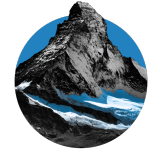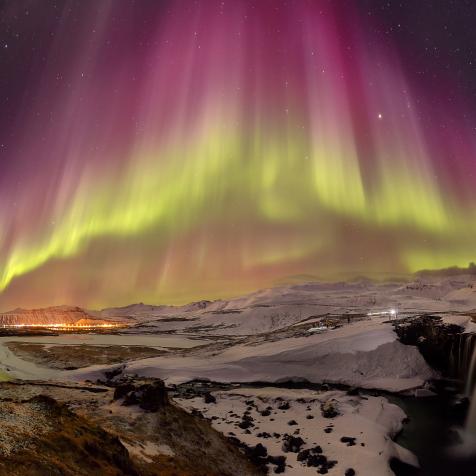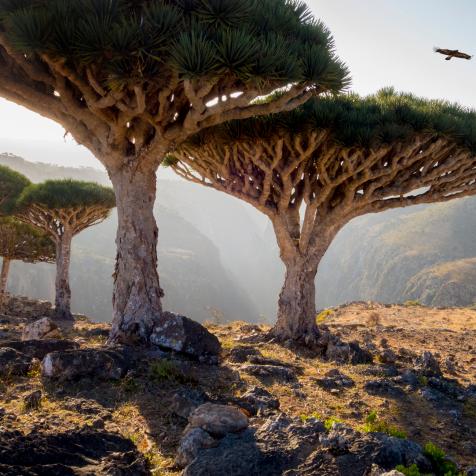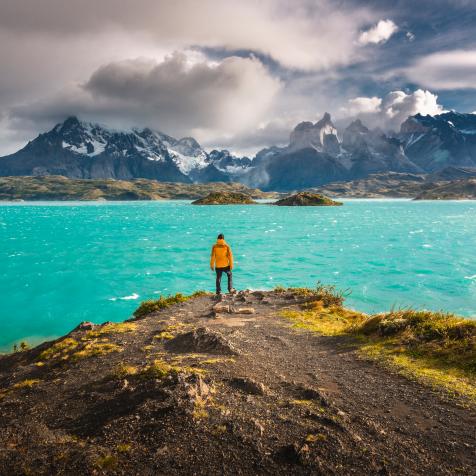
S. Greg Panosian
5 Stunning Places You Never Knew Existed
Marvel at these awe-inspiring places from around the world.
While travel is restricted during this time, here are some amazing places around the world to daydream about and look forward to visiting one day in the future.

Peter Unger
Lord Howe Island, Australia
The crescent-shaped island in the Tasman Sea lies between Australia and New Zealand and is just 10km (6.2 miles) long. Despite its complete isolation, the island is populated, by around 380 people. The number of tourists is not allowed to exceed 400, while the majority of the population holds Australian citizenship.
The island, which is essentially the remains of a 7-million-year-old shield volcano, was discovered in 1788, by a British commander, who spotted the island enroute to Norfolk Island with a cargo of convicts. It’s known for its geology, birds, plants and marine life, while cycling is the main mode of transport on the island.
Lord Howe Island Group, the collective name for the mainland and its surrounding uninhabited islands, has been deemed a World Heritage Site of global national importance, thanks to its virtually untouched forest and the fact that many of its plants and animals are found nowhere else in the world.

Ron Dahlquist
Keahiakawelo (Garden of the Gods), Hawaii
Don’t try to attempt to reach Keahiakawelo, on Lanai island, Maui County, without a 4x4. The otherworldly, Mars-esque landscape gets its nickname from Alexander Hume Ford, who visited in 1912 for an article for Mid Pacific Magazine and compared the place to the Garden of the Gods in Colorado.
Boulders as tall as six feet fill the lunar-like surface, which is barren of trees, flowers or grass.
Hawaiians call Keahiakawelo “wahi pana”, which means celebrated, noted or legendary places which have cultural significance. As legend goes, the priest of neighboring Molokai island, a man named Lanikaula, was angry at the people of Lanai, so he lit a fire wishing ill will to the island’s people.

Sudhanva Kashyap / 500px
Thor’s Well, Oregon
A circular hole formed after a sea cave collapse lies in the Pacific North West of America, in the middle of Cape Perpetua.
Also called “the drainpipe of the Pacific” or even sometimes, “the gate to hell”, the hole appears to swallow the Pacific Ocean. Geyser-like ocean sprays erupt in winter time, thanks to ocean pressure and the gusting wind. It looks more sinister than it is though; it is in reality just around 20 feet deep. The natural bowl is spectacular to watch, particularly during low tide when the sea surges up towards the surface before draining back down into the depths of the cavernous rocky hole again.

DC_Colombia
Balamku (Cave of the Jaguar God), Yucatán Peninsula, Mexico
Re-discovered in 2018, the sacred cave was stumbled upon accidentally by archaeologists who were searching for a sacred well. Located in the ancient Maya city of Chichén Itzá, the cave chambers hold more than 150 ritual objects used by the ancient residents of the city, from vases and incense burners to decorated plates with markings of the sacred ceiba tree and depicting the face of Tlaloc, the god of water,
The seven-chambered cave was initially discovered in 1966 but was sealed up and forgotten about. Caves were considered openings to the underworld, and this one is no different. The 1000-year-old cave is a labyrinth of tunnels 24 meters below ground. The name means jaguar god, an allusion to the divine quality Mayans attributed to the animal, which they believed had the ability to enter and leave the underworld at will.
The cave is so unexplored, that archaeologists are still mapping it out, and have only ventured into the first 450 meters of the chambers.

Ignacio Palacios
Lençóis Maranhenses, Brazil
This protected area on Brazil’s north Atlantic coast is known for its vast desert landscape of towering white sand dunes and seasonal rainwater lagoons.
The name translates as “bedsheets of Maranhão”, the state in Brazil where this natural phenomenon is located. The dunes fringe 600 square miles of coastline and are formed by the Parnaíba and Preguiças Rivers bringing sand to the ocean, and then the ocean’s currents – coupled with the inland-gusting winds – carrying it back away from the shore.
Although the rolling dunes look like they belong to an arid desert, the area gets around 47 inches of rain a year and is inundated with torrential rainstorms which form crystal clear lagoons reaching up to 10 feet deep, making them a great spot for swimming.


















